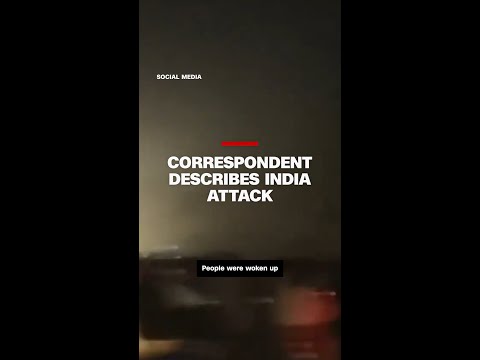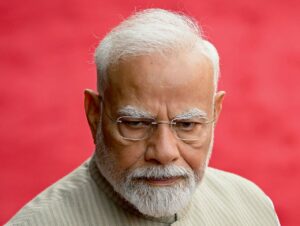Escalating Tensions Between India and Pakistan: What You Need to Know
The long-standing conflict between India and Pakistan has reached a dangerous new peak, with recent military actions and threats bringing the two nuclear-armed neighbors closer to full-scale war than at any point in recent years. The latest escalation began with a deadly attack on tourists in India’s Kashmir region, which New Delhi has blamed on Pakistan-based militants. In response, India launched retaliatory strikes across the Line of Control, prompting Pakistan to close airspace around major cities and vow military retaliation. As global leaders watch with growing concern, the situation threatens to spiral into a conflict with catastrophic regional and global consequences.
Kashmir, the disputed territory at the heart of seven decades of hostility between the two nations, has once again become the flashpoint for violence. The current crisis began when armed militants ambushed a group of tourists in Pahalgam, killing several civilians including foreign nationals. India immediately pointed fingers at Pakistan-based terrorist groups, allegations that Islamabad denies. Within hours, Indian fighter jets crossed into Pakistani airspace, striking what they claimed were militant training camps. The rapid escalation has left the international community scrambling to prevent an all-out war between two nations that possess nuclear arsenals.

Kashmir, the disputed territory at the heart of seven decades of hostility betwe…
The Roots of the India-Pakistan Conflict
The current tensions cannot be understood without examining the historical context of the India-Pakistan relationship. Since partition in 1947, the two countries have fought three major wars and numerous smaller conflicts, primarily over the Kashmir region. Both nations claim the mountainous territory in full but control only parts of it, with a heavily militarized Line of Control separating the zones. The dispute stems from the messy division of British India, when the princely state of Jammu and Kashmir was given the choice to join either nation.
Read also: https://spyrot.com/?p=707
What makes the current situation particularly volatile is the involvement of militant groups that India alleges operate with Pakistan’s support. Islamabad denies these accusations, maintaining it only provides moral and diplomatic support to what it calls Kashmir’s freedom struggle. The attack on tourists, which targeted civilians from multiple countries, has drawn unprecedented international attention to the conflict. With evidence suggesting the militants aimed to provoke an Indian military response, concerns grow about potential false flag operations designed to escalate tensions further.
Military Movements and Nuclear Risks
As both nations mobilize troops along their borders, military analysts warn that the situation could deteriorate rapidly. Pakistan has closed airspace around Lahore and other major cities, while India has moved additional forces into Kashmir. More concerning are reports that both countries have placed their nuclear arsenals on higher alert status, though officials from both sides deny preparations for nuclear exchange. The mere possibility has European and American leaders expressing what they term ‘utmost concern’ about the developments.
The nuclear dimension makes this standoff particularly perilous. Both countries possess hundreds of nuclear warheads and multiple delivery systems, from aircraft to ballistic missiles. While military strategists on both sides maintain their nuclear weapons are for deterrence only, the risk of miscalculation grows as tensions escalate. The international community fears that even a limited conventional war could spiral out of control if either side perceives existential threats to its security.
International Response and Diplomatic Efforts
World powers have called for restraint from both sides, with the United Nations Security Council scheduling emergency consultations. The United States, which maintains relationships with both countries, has offered to mediate while urging de-escalation. China, Pakistan’s closest ally, has called for dialogue while carefully avoiding direct criticism of either party. European leaders have been more vocal in their concern, with several foreign ministries issuing travel warnings for the region.
Read also: https://spyrot.com/donald-trump-shares-ai-generated-image-of-himself-as-pope-on-truth-social/
Diplomatic channels remain open but strained. Backchannel communications between Indian and Pakistani intelligence services continue, according to sources familiar with the matter, but at the political level, rhetoric remains heated. Pakistan’s prime minister has vowed to respond ‘at a time and place of our choosing’ to the Indian strikes, while India’s leadership maintains it reserves the right to take all necessary actions to protect its sovereignty. This posturing makes third-party mediation increasingly crucial to prevent accidental escalation.
Potential Outcomes and Regional Implications
The coming days will prove critical in determining whether the situation de-escalates or worsens. Military experts outline several possible scenarios, from a gradual cooling of tensions to limited border clashes, or in the worst case, full-scale war. The economic consequences are already being felt, with stock markets in both countries experiencing volatility and international airlines rerouting flights to avoid Pakistani airspace.
Beyond the immediate humanitarian concerns, prolonged conflict between India and Pakistan would have severe regional repercussions. It could destabilize Afghanistan’s fragile peace process, where both nations wield influence. Global energy markets might face disruption given Pakistan’s strategic location between oil-producing Middle Eastern states and energy-hungry Asian economies. Perhaps most worryingly, it could encourage other nations to test boundaries during this period of diverted international attention, potentially creating multiple global flashpoints simultaneously.
As the world watches anxiously, the hope remains that cooler heads will prevail. History shows that India and Pakistan have stepped back from the brink before, but never with so many external factors complicating the situation. The coming hours and days will test the crisis management capabilities of both nations’ civilian and military leadership, with consequences that could echo far beyond South Asia’s borders.
Read also: https://spyrot.com/dv-lottery-2026-results-how-to-check-if-you-won-the-green-card-lottery/
External Post Links:
India attack on Pakistan in wake of Kashmir massacre, airspaces closed around Lahore: Live updates
Nuclear powers India and Pakistan approach war as Europe watches with ‘utmost concern’
Tensions escalate as Pakistan vows response to Indian strikes after Pahalgam killings







